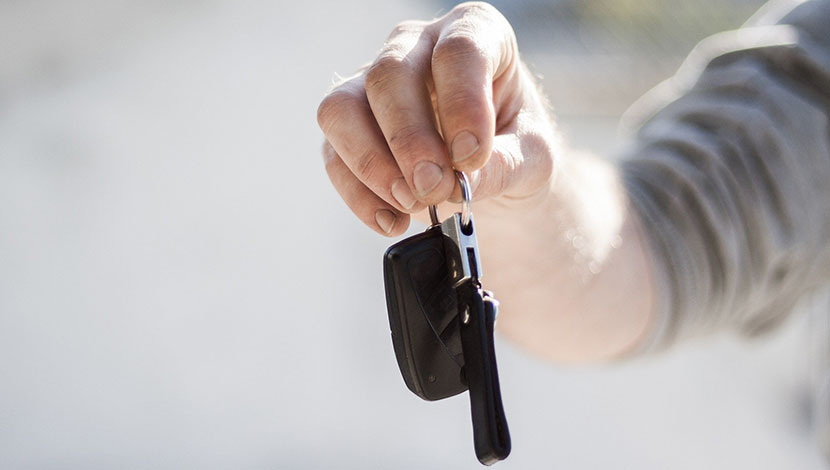From an early age, children learn they must share their toys. Many parents feel uncertain about sharing the family car with their kids. Even so, buying them a car might not be the safest option. To share or not to share – we look at the pros and cons of sharing your vehicle with your kids, including the cost of greenslips.
The pros of sharing the family car
Young people are not as keen as earlier generations to get their drivers licence. This may be because they have more options, like rideshare, or they just don’t want the extra expense. Sharing the family car is one way to save money. Given many adults don’t like sharing , it may be a challenge for parents to share their vehicle with an inexperienced young driver.
However, sharing your car with your kids has all kinds of benefits.
It really makes a difference if parents are more involved in their children’s driving. This is because teens who share the car tend to discuss and plan their journeys more. They feel less free and entitled than when they drive their own car.
It’s also an opportunity for negotiation, cooperation and problem solving in the family, such as, who is going to pay for the petrol? Or who is going to clean and maintain the car? These are useful life skills and emphasise there is more to owning a car than just driving it.
Last, it may be safer to share than buying them their own car, as we will see.
The cons of buying them their own car
The alternative to not sharing the family car is to buy (or help your kids buy) their own first car. Many parents do this with the best intentions. It frees up the family car for Mum and Dad, while teaching the young person about the experience of car ownership. From the outset, they can learn the responsibilities of ownership and maintenance of a vehicle.
Some say parents should never buy teenagers their first car because it’s a lost opportunity to teach them about saving up for a car.
It also depends on what kind of car teenagers drive.
Unfortunately, a teenager’s first car is often older than average and less protective than newer models. US research found nearly 80% of drivers under 20 who died and 71% of those seriously injured in the past 5 years were driving cars older than 10 years. Around 45% of deaths were in vehicles at least 15 years old.
Even so, parents often pass on their older models to their children while they drive the newer vehicles. It makes sense from an economic standpoint but it’s not the safest option.
Research shows young people with a car of their own have more risk of a crash than those who share the family car. Their newfound freedom appeared to create “a sense of entitlement about driving” that made them less cautious. A quarter of young car owners had been involved in crashes, compared to 10% of teens who shared the family car. This is not because they drove less but because they discussed their use of the car first.
Even so, we know from experience you may need to expect the occasional dent or ding in the side of it. Dents or dings are part of life, and so are accidents, which is why greenslips are more expensive if there is a young driver.
Greenslips are more expensive for young drivers
Insurers use the driver’s age to assess risk and the price they will charge for their green slip. When parents purchase a greenslip for the family car, they must give the age of the youngest driver. Even if the youngest driver is a learner driver, they must say so. In fact, L-plate drivers are among the safest because they are under adult supervision.
- P1-plate drivers are only 3% of all drivers but represent 20% of deaths and die at twice the rate of all drivers
- The first month of driving with P-plates is the riskiest time.
Parents who are sharing the family car may be tempted to leave out the youngest driver to get a cheaper price. While the greenslip is still valid, insurers can claim the difference between what was paid and what should have been paid. If anyone makes a greenslip claim based on a statement they knew was false, the insurer can claim up to $5,000 from them.
If any driver of the family car is involved in a collision, the price of its green slip may increase.
How to reduce young driver greenslip premiums
Younger drivers with their own car will want to reduce their premiums as much as possible. Greenslip premiums are affected by these details:
- Area where they live
- Type and age of vehicle
- Age of vehicle owner and youngest driver
- Driving history (offences, demerit points, years licensed)
- Claims history (insurance level and no claim bonus, at-fault claims).
Unfortunately, young people cannot help being young but, where possible, it helps to drive a safer vehicle. Parents can encourage them to keep a clean driving history with no traffic offences, demerit points, or insurance claims.
Makes sense to share the family car
On balance, it may make more sense to share the family car than buy your teenager their own car. Sharing involves one set of expenses only and may be safer for inexperienced teenagers in the long run. Your driving history could be more favourable for greenslip pricing than if your teenager had to rely on their own short driving history. It also means you need buy only one greenslip and that can’t be bad.


your opinion matters: